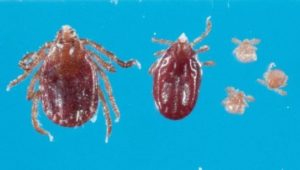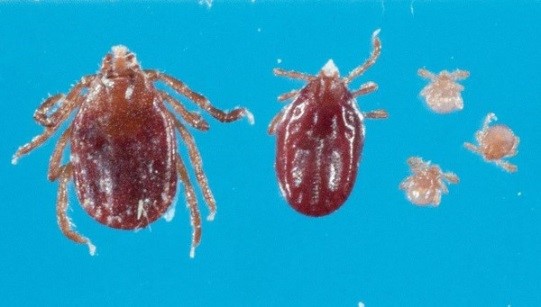State Urges Marylanders to take Precautions to Protect Livestock, Pets, and Humans

Photo of East Asian tick courtesy of the New Jersey Department of Agriculture
A National Veterinary Services Laboratory test has confirmed the presence of the Haemaphysalis longicornis tick, also known as the East Asian tick, the longhorned tick, and the bush tick, in Maryland. This is the first confirmed sighting of this tick species in the state. The longhorned tick was found on a white-tailed deer in Washington County and was confirmed on Friday, July 27.
The state’s Departments of Agriculture, Health, and Natural Resources are working together to inform the public about this new, invasive species and to urge Marylanders to take the necessary precautions to protect livestock, pets, and family members, and report any unusual ticks or a high concentration of tick bites to the University of Maryland’s Assistant Professor of Entomology Dr. Megan Fritz.
Currently, the longhorned tick has been found in eight states — New Jersey, West Virginia, Virginia, Arkansas, North Carolina, New York, Pennsylvania and now Maryland. As of now, the longhorned ticks found in the United States — including the tick confirmed in Maryland — have not been found to carry infectious pathogens. This invasive species is known to carry several diseases in their natural habitats.
“The discovery of the longhorn tick in Maryland reinforces the need of residents to practice tick prevention methods,” said Maryland Department of Health Public Health Services Deputy Secretary Dr. Howard Haft. “Avoiding wooded and brushy areas, wearing long pants and long sleeves, using repellant, and performing tick checks after being outside will all help prevent tickborne diseases.”
This tick species is non-native to the area and is easily mistaken for other common ticks found in Maryland. Hard to see with the naked eye, the brown-colored tick has distinctive “horns” that can be viewed under a microscope. This species has the ability to reproduce asexually and can lay anywhere from 800-2,000 eggs after feeding on a host. The longhorned tick also feeds on a large variety of hosts, such as livestock, poultry, wild birds, pets, small mammals and humans.
Ticks are usually found in tall grasses, meadows, pastures and wooded areas. Protect yourself, your family, livestock and pets from tick bites by following the below recommendations from the Centers for Disease Control and Prevention (CDC):
- Avoid wooded and brushy areas with high grass and leaf litter. (CDC)
- Use EPA registered insect repellents containing DEET, picaridin, IR3535, Oil of Lemon Eucalyptus (OLE), para-menthane-diol (PMD), or 2-undecanone. (CDC)
- Wear long sleeved shirts and long pants. Treat items like boots, pants, socks and tents with permethrin or buy permethrin-treated clothing and gear. (CDC)
If you find a suspected longhorned tick on you, your livestock, or your pet, please fill out a tick identification form. Information regarding shipping instructions and where to send the specimen is on the form.
For more information about the longhorned tick and its impact on animal health, please contact the Maryland Department of Agriculture’s Animal Health program by phone 410-841-5810 or email [email protected].
For information about the longhorned tick concerning human health, please contact the Center for Zoonotic and Vector-borne Diseases at the Maryland Department of Health by phone 410-767-5649 or email [email protected].

Photo of East Asian tick courtesy of the New Jersey Department of Agriculture


